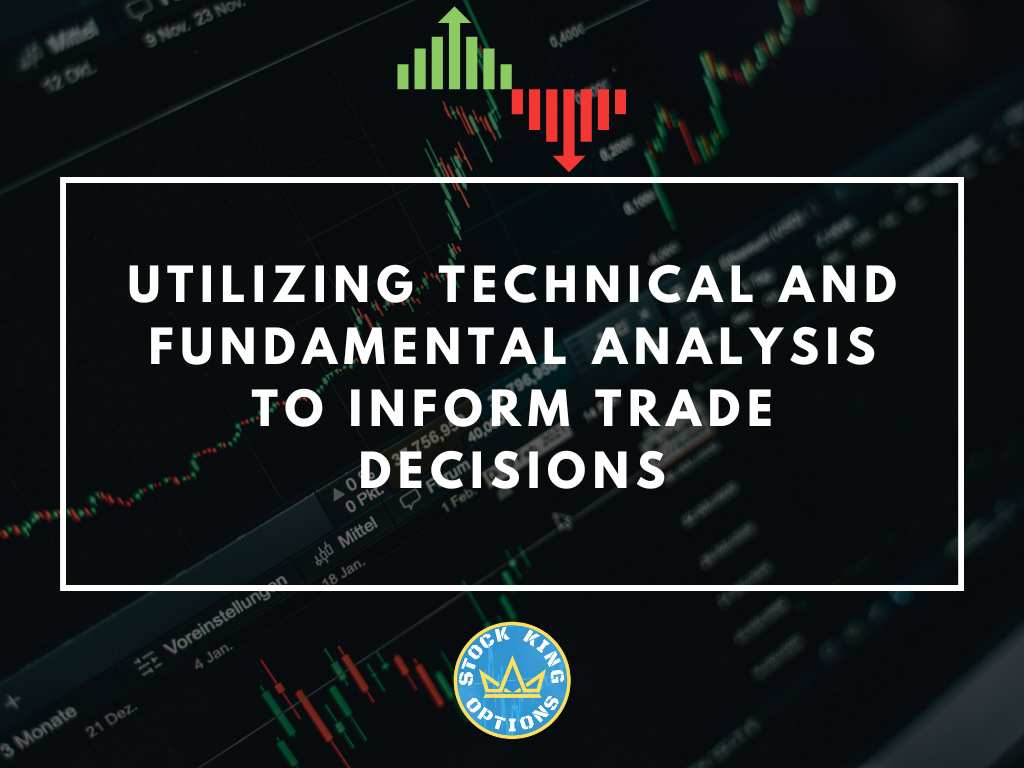
Are you tired of making trades based on gut feelings or rumors? Do you want to take a data-driven approach to your trading decisions? Look no further than technical and fundamental analysis. These two methods of analyzing market trends and financial information can provide invaluable insights into potential trade opportunities. We’ll explore the ins and outs of both analyses and how they can be used together to inform your trading strategy. Get ready to dive deep into the world of technical and fundamental analysis, and enhance your trading game today!
Basics of Technical Analysis: How Charting and Trend Analysis Can Guide Your Trades
Technical analysis is the study of past market data to identify patterns and predict future market behavior. Technical analysts believe that the collective actions of all the participants in the market, including buyers and sellers, producers and consumers, investors and traders, etc., influence price movements. They use this information to identify trends and make trading decisions.
Charting is a tool used by technical analysts to visualize price data. The most popular among charts is the candlestick chart. Candlestick charts show the open, high, low, and close prices for a given period of time. The wicks on the candlesticks represent the high and low prices for the period, while the body shows the opening and closing prices.
Trend analysis is another tool used by technical analysts to identify potential trading opportunities. A trend is simply a direction in which the price is moving. Trends can be up (bullish), down (bearish), or sideways (neutral). Trends can last for days, weeks, months, or even years which are depicted in downtrend and uptrend channels. Technical analysts use trend lines to identify trends and potential trading opportunities.
When combined, these two tools can provide traders with a wealth of information to inform their trading decisions. Charting can help traders identify potential support and resistance levels, while trend analysis can help them identify potential trend reversals. By combining both technical and fundamental analysis, traders can develop a well-rounded approach to trade execution.
Fundamental Analysis 101: Using Market and Economic Data to Inform Your Trading Decisions
Technical analysis and fundamental analysis are both important tools that traders can use to inform their trading decisions. However, many traders find themselves wondering which approach is the best. In reality, the answer is that both approaches have their merits and should be used in conjunction with each other to give you the most accurate picture of the market.
To help you better understand how to use both technical and fundamental analysis, we’ve put together this guide which will cover:
What is fundamental analysis?
What is technical analysis?
The benefits of using both approaches.
How to use market and economic data to inform your trading decisions.
Fundamental analysis is a method of evaluating an asset by looking at economic, social, and political factors that may affect its price. Traders who use this approach look at factors such as a company’s financial statement, earnings reports, news events, and overall economic conditions. The goal of fundamental analysis is to provide traders with information that can help them make informed trading decisions. Fundamental analysts try to identify assets that are undervalued by the market and then buy these assets in hopes that they will eventually reach their true value. Conversely, they also look for overvalued assets in order to sell them before the market corrects itself. In order for an analyst to properly carry out a fundamental analysis, they must have a thorough understanding of accounting and economics. They also need to be able to read and interpret financial statements.
How Combining Both Approaches Can Enhance Your Trading Strategy Give You Trading Confluence
Technical analysis and fundamental analysis are two of the most commonly used approaches in forex trading. While they both have their pros and cons, many traders find that combining the two can give them a more well-rounded and informed perspective when making decisions.
When it comes to technical analysis, traders focus on past price patterns and use various indicators to try and predict future price movements. Fundamental analysis, on the other hand, looks at economic factors that can impact currency prices. This includes things like interest rates, inflation, GDP, and political stability.
Both technical and fundamental analysis have their merits, but traders often find that using both together can give them a more comprehensive view of the market. By combining the two approaches, traders can get a better sense of where prices are likely to go in the future and make more informed trading decisions.




